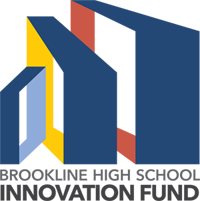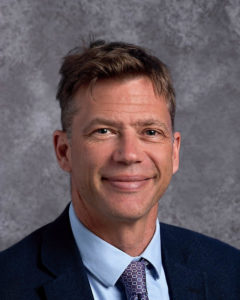
Dear BHS Parents, Guardians, and Caregivers,
I have pledged further communication as we end the year and am trying my darndest to follow through and share more information as we end the 2022-23 school year. One point of pride for me as I end another year at Brookline High School is how we create, refine, and institutionalize excellent courses, programs, and thinking. We certainly innovate within our high school and district budgets. At BHS, we are fortunate to have powerful, generous partners like the BEF, PTO, Brookline Community Foundation, and many more.
I write this afternoon to share about the impact of Brookline High School Innovation Fund programing on our students, staff, and school community. Below is an attempt at capturing which programs and courses the Brookline High School Innovation Fund helped bring us in 2022-23, including what we integrated into the PSB budget and what we have planned for 2023-24. These are exciting times, and I am glad to have the Innovation Fund as a key partner in creating the school culture and program our young people need and deserve.
Please note some of the course and program descriptions are pulled from the Innovation Fund website; while I sign this communication, my hand is one of many within the fund and across our school district who help our educators chase their best ideas for helping young people feel as though they belong and will be engaged, challenged, and supported to learn and grow as students, citizens, and human beings.
New Program for 2023-24: Queer Student Program
I am excited to announce the creation of The Queer Student Program (QSP), a new addition to BHS designed to support LGBTQ students throughout their experience at the high school. For decades, the student-run club known as the Gender Sexuality Alliance (GSA) attempted to fill this role, but as the LGBTQ student body at BHS has grown, it has become increasingly necessary to also expand our support system for this community. The new Queer Student Program includes two course offerings: a new Wellness course and a 12th grade elective called “The History & Science of Sex and Gender.” The QSP also offers critical affinity programming.
Starting next year, there will be a 9th grade Hub/Advisory class specifically for LGBTQ students. We will also launch the “OUTstanding Speaker Series” in collaboration with other school affinity groups, such as African American and Latino Scholars Program (AALSP) and the AAPI Leadership and Affinity Program (LEAP).
The Queer Student Program is the brainchild of teachers Stephen Eesley (Social Studies), Kate Leslie (Social Studies), and Julia Mangan (Science). Stephen, Kate, and Julia worked closely together and with members of the Wellness Department to create programming and course offerings for our LGBTQ students. The QSP provides very concrete ways for our LGBTQ youth to be seen and heard, engaged and supported.
Using Innovation Fellow work to Re-develop Social Justice
During the 2022-23 school year, School Within a School English teacher Keira Flynn-Carson served as our Innovation Fellow. Keira has been at BHS since 2004 – as an English teacher, Special Educator, SWS leader, and force for goodness. As part of Keira’s Innovation Fellowship this year, she explored ethics as a critical force in driving change – primarily in the area of sex and consent education but also in a wide array of human relationship contexts.
This interesting and important work will now find a home in a reimagined Social Justice course at BHS. The program will involve academic study (Psychology, Ethics, History, Sociology) as it relates to social justice topics and movements and prepares students to take action through internships and school/community improvement projects – all guided by the ethics of care.
The Social Justice Leadership Program was conceived in 2007 with support from the Brookline High School Innovation Fund. Roger Grande and Kate Leslie have taught and led the program since then. With Roger now focused on Global Leadership (another Innovation Fund program) and Kate helping lead the newest Fund venture (QSP) Social Justice needed new leadership. Keira’s work on ethics within her Innovation Fellowship seems like an ideal lens through which to re-think Social Justice post-pandemic and impact Brookline High School students for years to come.
Continuing in 2023-24: SEL-T, Data Science, and Climate Science
Social Emotional Learning Tutorial (SEL-T)
In 2002, the Innovation Fund seeded BHS Tutorial to support students needing individual, content-based tutoring in academic subjects. With student social-emotional needs rising dramatically in recent years, particularly in the wake of the pandemic, BHS faculty will continue to pilot a social-emotional learning section in the existing Tutorial structure. SEL-T helps students with social-emotional challenges learn to identify stressors, and develop coping and self-regulation strategies to support academic and social success at school. From this pilot, BHS faculty plans to train more faculty in SEL pedagogy with the hopes of integrating SEL into courses across the curriculum.
Data Science and Social Justice
This data science course, proposed by the Math Department in collaboration with Special Education, uses problems related to a variety of social justice topics to learn the skills necessary to analyze data, understand sampling, distinguish correlation from causation, recognize bias, and use probability and modeling to create and support data-based arguments. Topics may include social justice issues related to racism, healthcare inequities, political underrepresentation, and gun violence. Students learn how to use spreadsheets, coding (python or R) and data analysis technology to aid them in their research.
Climate Science and Social Solutions
Climate Science and Social Solutions is an interdisciplinary, team-taught senior-year elective with instruction from both the scientific and historical perspectives. The course enables students to engage in project-based learning by analyzing real world policy options related to climate change, and then research and posit definable and effective solutions. The goal is to have seniors engage in advocacy campaigns designed to shape perceptions on climate change and encourage personal mitigation strategies.
Integrated into the BHS/PSB Budget
Creating new courses, programs, and curricula is part of the Fund’s core mission. As a school and school system, we need to figure out how to institutionalize what the Innovation Fund helps our educators create and refine. This way, Brookline students can continue to enjoy and benefit from Fund-born programming for years to come.
Hub Advisory
Hub/Advisory, supported by an Innovation Fund grant in Fall 2019, has as its principal goal community building among students and a faculty advisor in a non-evaluative setting. During the pandemic, it became an important source of support for isolated students and an opportunity for teachers to reach out to build connections with students in a different environment. As pandemic disruptions and construction delays limited the original vision of Hub’s implementation, this grant extension will allow faculty to train new faculty to be advisors and expand the program into a four-year experience for BHS students.
Rethinking the Restaurant (Tappan Green)
Rethinking the BHS Restaurant integrates a long-time high school program more cohesively into curricular and co-curricular experiences for the entire BHS community, with students taking the lead in running its business operations in meaningful and creative ways. Faculty are excited by the multifaceted opportunities for innovation where the restaurant has potential as a lab for interdisciplinary learning with a social impact lens. For example, the restaurant could be a place where English Language Learners could introduce dishes from their home cultures as a special menu item; World Language teachers and students could work with the culinary program to design “take-over” menus for cultural observations or holidays; and students in Social/Food Justice or Environmental Action clubs could team with our culinary program to understand and improve how to sustainably run our business. Rethinking Restaurant opens up outstanding experiential learning opportunities for students not only in the restaurant itself, but also for a diverse range of students in clubs, courses, and throughout the campus.
This summer, Britt Stevens, our Curriculum Coordinator for Career and Technology Education (CTE) is pulling together an Innovation Summit for high school faculty and staff that focuses on Beginnings and Endings. The summit, funded by the BHS Innovation Fund, will help us move forward with ongoing work to re-think ninth grade at BHS as well as how we might continue to re-consider senior year. Ninth grade and senior year are critical priority areas for Brookline High School in the next three years, and I am excited and grateful that the Innovation Fund will help us brainstorm ideas and eventually turn them into concrete, engaging learning experiences for our students, current and future.
Thanks much and take care,
Anthony Meyer, Head of School
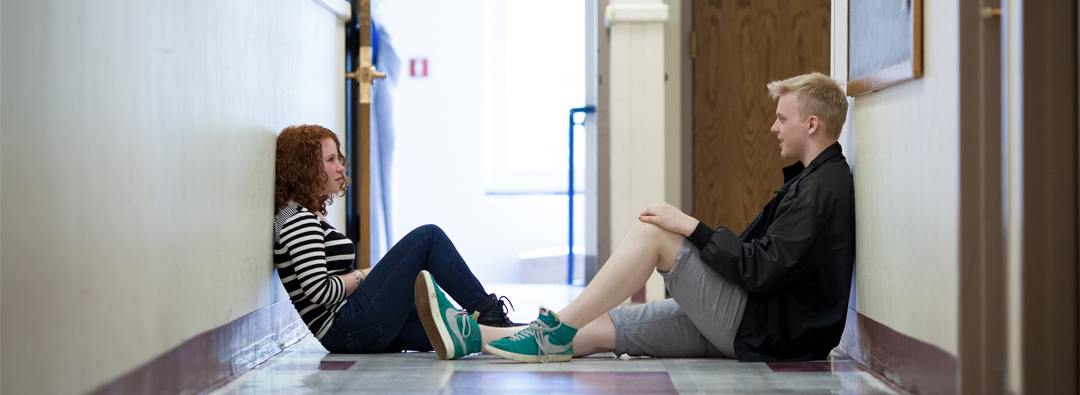
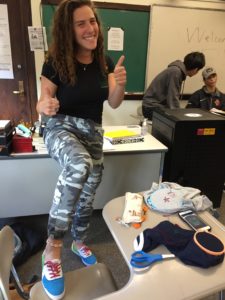 Brookline High School alumna Maya Rozen interviewed current students about their experiences participating in BHS Innovation Fund courses. Hear the impact of the Innovation Fund at BHS in the students’ own voices.
Brookline High School alumna Maya Rozen interviewed current students about their experiences participating in BHS Innovation Fund courses. Hear the impact of the Innovation Fund at BHS in the students’ own voices.
Many of the courses offered at BHS revolve around a curriculum that students are required to take, which is why many students relish the academic opportunities that grant them more freedom to explore other areas of study more on their own terms. For students interested in engineering, Engineering by Design is a great class that allows students to explore different areas of engineering and design and to pursue projects that they are passionate about. Other classes like Social Justice and Racial Awareness provide a safe space for students to learn about important topics with the freedom to share their own thoughts, experiences, and beliefs. Many of these classes allow students to explore new subjects that aren’t always covered in the required curriculum.
In your opinion, what makes your Fund class different compared to your other classes?
“Something that stood out to me about the class was the amount of freedom we had because I kind of expected it to be really structured with a lot of rules, but I found that with all of the projects there was a lot of room for our own ideas and a lot of room for creativity, which I liked.”
~Sarah S., BHS ’21, Engineering by Design
“I think since you have to apply, everyone who is in the class is really interested in social justice and wants to be there. It’s not like people are taking it just to check it off the list or just to say they took it. I can see people who were in my class that are now doing things on their own time, whether they have an internship, or they’re volunteering, or they’re just doing research and finding ways to work on the issues that we learned about. I also think that since everyone wanted to be there, people really opened up because we’re all so passionate about it. Everyone’s open to hearing the perspective of other people who are passionate and I think a lot of that comes from Ms. Leslie because she has so much passion. You can see when she’s teaching that she wants to be there so much and she wants to give us all this knowledge of what is actually happening, and then give us the freedom to talk about what we think, and that is something that I often don’t find in a class.”
~Aine D., BHS ’21, Social Justice
As a ninth grader entering BHS, the thought of graduation seems as if it is a million years away. Freshman and sophomore years pass by in the blink of an eye, and then suddenly you’re in your junior year and it’s time to begin figuring out what your next steps will be after you graduate high school. Some students go through high school with a clear idea of what those next steps are whether it’s pursuing a certain career or studying a specific major in college, but for many students this is not the case. Having the opportunity to try out different classes can expose them to new subjects and inspire new interests. Many students find that classes like Social Justice can lead to new interests that they are excited to continue pursuing after high school. Aside from exposing students to new topics, these classes also teach students very valuable skills that they don’t always learn from their required courses. Tutorial helps many students learn how to better manage their time and their work, teaching them valuable skills such as organization, time management, and how to plan out their week. Other classes like Racial Awareness can help students feel more comfortable going out of their comfort zone through being exposed to new points of view or learning how to have tough conversations. All of these skills are very important to have during their time at BHS and beyond.
How has the class shaped who you are as a student? How have you grown as a result of this class?
“As a student, I noticed as I was taking this class that before I tended to make more assumptions about people, and this class has helped me think about the reasons I’m doing that and how not to act on those assumptions, and I think I definitely have grown from taking this class.”
~Kate C., BHS ‘22, Racial Awareness
“I think I’ve grown a lot in the way that I feel like I can voice my opinions more if someone brings up an issue. I feel like I have the knowledge and the power to actually voice my opinion because I’ve learned about it. I think that a lot of times now I’ll hear conversations going on and I’ll actually know what they’re talking about which I think is really cool because I can participate in the conversation. Now more than ever I feel like I can help. I have so much of an understanding of what’s going on, so I can really help and try to help other people try to understand what’s going on.”
~Zoey F., BHS ‘22, Global Leadership
“I think I’ve grown in my abilities to ask for help and to make sure that I have a plan for the week for my assignments and projects and when I should be doing them. I think my experience would be a lot harder, I would be less organized, and I don’t think I would get as much work done without tutorial.”
~Declan T., BHS ‘22, Tutorial
“I think that I’ve been able to want to have the uncomfortable conversations. A lot of times people don’t want to talk about a certain thing because they know people have conflicting points of view or that it affects someone personally and they don’t feel like it’s their place to talk about it. This class made me realize that you can have a voice, but it’s also really important to listen, and listen to the uncomfortable conversations and be able to ask questions and be able to talk about it even though it might be uncomfortable.”
~Aine D., BHS ‘21, Social Justice
Many classes like Global Leadership and Social Justice offer students the unique opportunity to learn about current, important topics while simultaneously engaging in real world problem solving and solutions. Fundraisers, volunteering, and peaceful protests are some of the many ways where students can feel like they are not just doing the important learning, but also feel like they are making a real difference and contributing to the solution.
Can you describe some of the most memorable parts of the class and talk about a couple of your favorite assignments?
“We were having a lot of meetings and conversations about the Black Lives Matter movement. We got to talk about them as a class and getting to hear from other people about what they’ve been doing and how they’ve been using the things that we learned from this class to contribute to this movement was great.”
~Kate C., BHS ‘22, Racial Awareness
“I think a lot of people will say this but definitely learning about the incarceration system. The prison trip is always something people talk about for a really long time. I was excited about the trip because I think the incarceration system isn’t something that we see on the news every day. When I sit down to watch the news, I don’t see them talk about all the oppression and discrimination that exists in the incarceration system. I think that it’s overlooked a lot so I really wasn’t aware of what was happening in the system, and being able to go to a prison and then talk to inmates was really cool because we could hear their first hand experiences and they were really honest. They talked about the guards there and how they’re not nice to them and what it’s like in solitary confinement. They were just really really honest about what’s happening, and being able to see that after watching movies about the incarceration system and what happens was really powerful, so that was the night that really stood out to me.”
~Aine D., BHS ’21, Social Justice
“One of the assignments we did was called the TAP Challenge which was where we raised money for clean water in Nicaragua, and we did that by starting a school campaign to have everyone bring their own water bottles and not use plastic water bottles for 25 days. We sold reusable water bottles and tumblers and also stickers. I thought it was really cool because it really felt like we were making an impact instead of just learning about the issue. I actually felt like I was doing something about it while still learning about it in class.”
~Zoey F., BHS ’22, Global Leadership
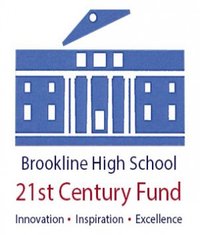
First, came a tragedy. In 1980, Andrew Warren Lurie, a Brookline High School graduate in his freshman year at the University of Chicago, died of an infection at school.
Years later, his parents, Bob and Syrul Lurie, came to Bob Weintraub, the headmaster of the high school, and explained that they wanted to create a memorial space at the high school in Andrew’s honor. They offered to pay to construct and furnish a beautiful library — named for Andrew — in School Within a School (SWS), which Andrew had attended.
The question was: could a public school use private money to do this kind of project? The Luries and Weintraub cited endowments for public colleges and universities as examples of spending private money for public institutions. The superintendent of schools, James Walsh, and the school committee supported the idea.
The Andrew Lurie Library exists to this day. And the project had an added effect: it sparked an idea. Weintraub recalls Andrew’s father, the late Bob Lurie, saying, “You know, if we can raise money for a room, we can probably raise private money for other stuff you need, Bob.”
A team from BHS visited the Boston Latin School and spoke with the headmaster, Mike Contompasis, and the school’s very sophisticated development team. Boston Latin actively solicited and cultivated their alumni — which included some very prominent and generous folks — and had built a multi-million dollar endowment. The Brookline team left Boston Latin saying, “We can do this.”
As this idea was germinating, two renowned senior teachers at the high school – Margaret Metzger and Gayle Davis — approached Weintraub to tell him that they were nearing retirement, and felt a need to create ways for seasoned staff to ease the entry for newcomers. Long story short, the plan for “Teachers Mentoring Teachers” was born. The teachers would be released from one of their classes so they could devote time to developing and running it, and their professional lives would be enriched. It wouldn’t be very expensive. Weintraub figured it would cost around $25,000. But that was money he didn’t have.
So he spoke with Bob Lurie and another prominent BHS grad and Brookline citizen, Arthur Segel, and a team began to coalesce around a goal — starting a private, non-profit foundation to support innovation at the high school. The Brookline Education Foundation already existed and was widely beloved for the awards and recognition it gave teachers — but its grants tended to be small.
“This was a very different idea,” Weintraub says. “This was to do big stuff, in the spirit of Brookline’s innovative history.”
“Local Solutions to National Education Challenges” became the mantra that defined the project. Brookline High would address important educational problems and develop compelling programs that, if validated, could be disseminated nationally. “Through this foundation, we can improve public education and simultaneously polish the mystique of Brookline High,” Weintraub argued.
After copious work by Lurie, Segel, and others, the Brookline High 21st Century Fund was launched with a gala in December 1998 at the home of a team member. The launch featured a star-studded list of speakers who graduated from Brookline High, including Mike Wallace, Mike Dukakis, Conan O’Brien, and Bob Kraft. More than 50 donors attended and kicked in $10,000 each. With $550,000 in hand, the “BHS 21st Century Fund” was born.
The Fund didn’t have much structure at the beginning, Weintraub says; it tended to generate ideas informally, focusing on problems and how to solve them. Teachers Mentoring Teachers was the first program and proof of concept. It was evaluated and validated, research conducted on the program was published in prominent national educational journals, and the program leaders — Margaret Metzger and Gayle Davis — presented to school systems across the country. Both Metzger and Davis acknowledged that their engagement with the program prolonged their careers at Brookline High by many years.
The Fund — now known as The BHS Innovation Fund — is celebrating its 20th anniversary. It has created 15 programs, including the nationally significant African-American and Latino Scholars Program, the Social Justice Leadership Program, and BHS Tutorial.
The Tutorial Program, which has also received national recognition, began with a research project. Weintraub saw that the only academic support/tutoring available at The High School was through the special education program. The “experiment” removed 40 students — the experimental group — from the special education Learning Centers and placed them with regular classroom teachers for tutoring. Forty other students — the control group — with similar academic profiles remained in the Learning Centers. The format for the services was the same — five students met with a tutor every day for one class period. Data was gathered over two years.
The results demonstrated that for students with mild learning issues, tutoring with regular classroom teachers — math, social studies, world languages, and science — was more successful in terms of academic data. Students in The Tutorial Program also reported feeling better about going into a mainstream classroom than a special education classroom.
For teachers, the program provided some professional variation, working with a small group of students in a different way, once a day. And for parents, it offered tutoring that they could not afford otherwise. Good for students; good for teachers; and good for parents.
In 2017, the Fund’s name was changed to the Brookline High School Innovation Fund, to more accurately reflect its mission. As it celebrates its 20-year anniversary, this mission continues to be not only relevant, but also paramount in supporting Brookline High School students as they enter today’s world.
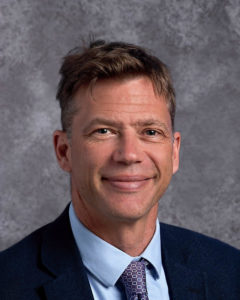 Q: In your view, what is the Fund’s role at BHS?
Q: In your view, what is the Fund’s role at BHS?
A: I think the Fund’s role is to spur and foster innovation at the high school. To me that means supporting teachers and supporting really interesting ideas that would benefit kids. It could be regular classes, particular curricula, or it could be grants and programming. The Fund does that, in part, by putting really smart parents and community members in partnership with Brookline High and district staff, so we get the perspectives of smart parents and smart people in all kinds of different disciplines and industries, and that helps us think about the work that we do. When we had our breakfast Elon [Fischer] was talking about his very interesting work as Innovation Fellow, and what he heard in return were several ideas about how that work could be improved or looked at differently, and really, at the end of the day, supported. We had two premier design thinkers [at the breakfast] who’d done a whole lot of work. So, is it possible that Elon would have stumbled upon those people? Yes. Is it much more likely that the Fund helped put those people together? Yes. There’s a tremendous amount of energy and expertise in this community, and I think the Fund provides a key way to support the school using that energy.
Q: So that’s a way of bringing parents in, connecting them with teachers. In terms of drawing talented teachers into the school, is the Fund something that helps you in the hiring process?
A: Absolutely. We had a very specific example of that this year. We had a teacher who was set to co-teach Film as History/History as Film — this teacher left the school and district in the late spring/early summer — it was late in the game. It seemed like bad luck. We had a very interesting candidate for the position, but we were asking her to take less FTE to be here. The fact that one of her teaching assignments was going to be this very interesting co-teaching opportunity was an incredibly powerful draw. She ended up coming.
But to answer your question more broadly, there are so many incredible teachers here, and what has been clear throughout — at least in my history with the school, and what I’ve seen and heard — is that we find different ways for teachers to improve and increase their leadership skills. One of those ways is by creating a course or leading a program, supported by the 21st Century Fund. So Elon Fischer is a leader in this school, and the Fund’s Innovation Fellowship is a perfect way for him to work on and demonstrate that leadership. That to me is under the umbrella of retention. I absolutely believe that opportunities with the Fund help us attract and retain talented, committed teachers and support them to help lead the school. With a faculty and staff of this size you need all kinds of leaders.
Q: What challenges currently face BHS, and how does the Fund help to address them?
A: I think we need to look at all of our collaborations, all of our partners, and all the work that we do to focus on challenges. There are several challenges that come to mind. I would say the biggest is that we have a group of students who struggle here to engage, struggle to achieve in the ways we believe they’re capable of achieving. It’s not surprising that it’s the historically underachieving populations of students who don’t do as well here on various measures. It’s certainly not true of everybody in those populations, and it’s not unique to Brookline, but it’s true enough that we have an achievement gap. As we look forward to addressing that, we need to think about how to do it: How does our student support, how does our monitoring of kids increase and improve so that the net is raised higher, and the net is tighter? We need to think, instructionally, about how we’re making sure that excellent instruction targets kids who really struggle to engage. These are not novel ideas — they’re things that an institution like this is always engaged in. And I think there are opportunities with Fund courses — we can look at things that have already been experimented with in the Fund, and also programs and courses that we might want in the future, and ask how can they affect as many students as possible.
Tutorial is a really good example. To me there’s a tremendous opportunity that we’re embarking on to reconsider tutorial and think: OK, this has been a really important model. How do we use it even better and differently to make sure that we’re catching kids sooner, that we’re being flexible in the structures we’re using, and then zeroing in on re-teaching or supporting kids in what they need content-wise, as well as habits of learning? That’s what I’m interested in thinking through with the Program Committee and others: We have this course proposal, or we’re thinking about these courses — what will be the impact for the students in that course or in that program, and in what ways can those experiences be offered to more kids? It becomes an access issue. The Makerspace is a great example. It is overdue and so appreciated to have the Fund’s support to have Aubrey Love and Andrew Maglathlin work on a Makerspace. And it’s going to be a space for Engineering Innovation and Design, but then we think if we have this incredible space, and the district comes in and helps improve it also, how do we make sure that that space is accessed by as many kids as possible?
Another long-term benefit of the 21st Century Fund is that these courses might run for X number of years, but it’s safe to say that the experience of developing these courses should have long-term impact: What did we learn about how kids learn? Film as History/History as Film is not only a terrific opportunity for the students who are enrolled, but: What are we learning about interdisciplinary studies? We believe that more kids should experience that, so how do we build on this model? Many examples come to mind, but those are a few. To me, the central challenges right now are issues of equity and access.
A second and parallel issue is space. We’re moving towards a building renovation, so we’re thinking about how we organize a school that, in five years, will be over 2500 students. What does that mean about how we organize ourselves? What does it mean about the opportunities and supports we want to make sure all kids have? Then there will be the challenge of a school in the midst of a renovation: How do we continue to do what we do while having our spaces changed?
A third challenge is that there’s been a significant transition in leadership. All of these are real opportunities, and that for sure is an opportunity. It’s been great to welcome Andrew Bott and Nicole Gittens. Across the board, there’s quite a bit of change.
Q: So, tell us something about your personal interests. If you could take one of the 21st Century Fund’s classes, which would you choose?
A: Historically, if I could have taken Good Citizen in a Good Society, I think I would have loved that project-based class. It was a really interesting approach to English and History. The discussion about really meaty issues and ethics would be really interesting to me. It was thematic, so they would read things like the Tracy Kidder book Mountains Beyond Mountains, the one about Paul Farmer [of Partners in Health], and were essentially looking at: What does it mean to be good? What does it mean to make decisions that are mindful of others? What does it mean to foster those same values in a community or in a society? Also certainly the Racial Awareness Seminar. Having the opportunity to be guided and supported around thinking about identity and racial identity — to do it in a highly supportive, small community, very intentionally doing work that we all pay lip service to — would be really incredible. Frankly, seeing the super-motivated young people who are involved, I would want to be a part of those classes, not only because Malcolm Cawthorne and Kate Leslie are awesome teachers, but because cool, smart, thoughtful students are working to wrestle with really important topics. Also Film as History would be really neat. I don’t have any technical skills, and I would love that. It’s a co-taught history and art class, and I think many kids are probably coming to it from one side or the other, but to have a passion for history and story, and then be able to learn some of the technical skills behind film-making would be awesome.
Q: OK to finish up — and I hope this isn’t too personal — but the Gala-Rama is coming up, with bowling at Jillian’s. I assume, being a mid-westerner, you’re a pretty good…
A: Oh, I can bowl! In fact there was a bowling alley in Minneapolis that Earl Anthony owned — he was one of the great bowlers of the ‘80s. I used to go there when I was in high school, and I joked that I was “the real Anthony.” I wasn’t in a league, but my high score was probably somewhere in the higher hundreds — 160, 170. But that was in my high school days. I think now I’m… beatable.
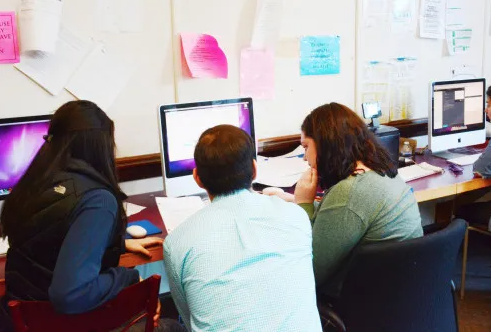
Students work together on homework in a Tutorial class. Tutorial can help students stay organized and study for classes.
I have been in Tutorial since my freshman year and it has been very helpful for me. I use Tutorial as a block to do some of my homework from the night before or to study for tests and quizzes that I have that day.
Everyday, I plan out when I’m going to do my homework and how much time I should spend on each subject. There have been times where I have forgotten to do an assignment. For example, a few weeks ago I had a two-day project due the next block, and I had to do some edits on it. I was lucky that I had Tutorial before that block, so I had the chance to get it done.
It is nice to have an organized class where I can sit down without any distractions and get my work done. During the school year, especially in the spring, managing time can get very difficult due to sports and other commitments, which is why I love having Tutorial in my schedule.
It’s also nice to have two teachers in the room, because I can get help on the subjects that they specialize in. During my three years that I have been in Tutorial, I had the chance to work with many teachers in different subjects.
In freshman year I had Mr. Cawthorne, who helped me with history, and Ms. Hitchcock, who helped me with math. In Sophomore year I had Ms. Longmire and Mr. Mallory, who taught history and math, respectively.
This year, I have Ms. Grubb and Dr. Weiffenbach, who teach history and biology respectively. Having a block where I can brush up on the information that we went over in class is very helpful. Taking Tutorial has been great and I am glad I chose to take it.
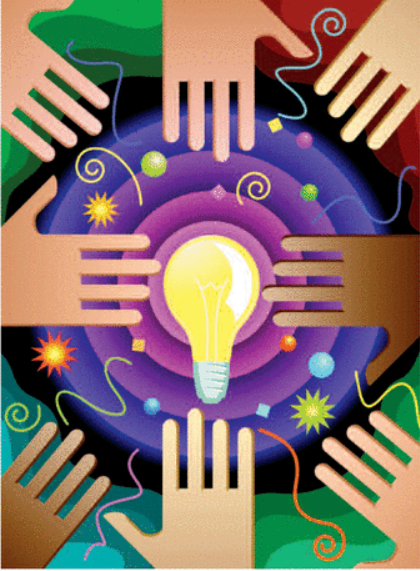
“I am going to college because of the Brookline High School Tutorial. The program saved my academic life; it’s as simple as that.”
— Danny
A Massachusetts high school demonstrates that a mainstream academic support program for students with mild learning problems can help motivate students to learn and improve their academic performance as well as promise long-term financial savings at a time when special education budgets are increasing dramatically.
refocused and distracted, Danny was diagnosed with a learning disability during middle school. That diagnosis meant that Danny was placed in the special education program when he enrolled as a student at Brookline High School in suburban Boston, Massachusetts. By his sophomore year, he was struggling to pass his courses and complained to his mother that he was unhappy with being in the high school’s learning center for special education students.
JULIE JOYAL MOWSCHENSON is a teacher, vice chair of the 21st Century Fund at Brookline High School and director of the Premedical Summer Institute at Harvard Medical SchooL ROBERT J. WEINTRAUB is a teacher, headmaster of Brookline High School and trustee of the College Board
“I didn’t have a learning disability, “he says. “I just couldn’t focus, and didn’t know why.” In 2002, during his junior year, his mother enrolled him in Brookline High School’s new Tutorial Program, an alternative to the more traditional special education learning center. The Tutorial serves students with learning disabilities, replacing conventional special education support with academic guidance from regular classroom teachers. Tutorial students meet daily with a team of two teachers — usually one from the humanities and the other from math/science – in a regular C-block class. Meeting with regular academic teachers allows students like Danny to escape the stigma often associated with special education. These students have greater access to the general curriculum, prepare for the state-mandated standardized test required for graduation, and feel more like an integral part of the mainstream school community. While enrolled in the program, Danny’s confidence and performance improved, and he made honor roll for the first time. He has already been on the dean’s list for three semesters in college.
Educators’ initial sense that too many students were being diagnosed with learning disabilities led to the creation of Brookline’s innovative Tutorial Program in 2002. The Tutorial offered an alternative to a system that was stigmatizing too many students and costing too much money. Brookline High Schools is now better able to address the needs of students defined as special education students by moving them into a mainstream academic support program. At the same time, the program offers teachers a new, inspiring, and reinvigorating means of interacting with students and sharing their love of the subjects they teach. Parents also see the positive effects in their children’s intellectual self-confidence and their ability to succeed in mainstream academics.
The Tutorial corrected a system that was stigmatizing too many students and costing too much money.
At BHS, over 100 students have left special education for the Tutorial. As the Tutorial becomes more established in the school, this promises a long-term shift in moving special education dollars into the regular education budget.
In recent years, many students have been diagnosed with disabilities because this was too often the only way they could receive academic support services. BHS psychologists reported, for instance, that they were at times ambivalent about diagnosing disabilities. In order to receive an Individual Education Plan (IEP), a student must have a diagnosed disability and must not be making “effective progress” in school. Students might well need assistance, but not necessarily “specialized instruction” provided by special education staff. The psychologists wanted to help these students and thus recommended special education services. The psychologists also reported that they felt pressure to recommend IEPs so that students could receive accommodations on standardized tests like the SAT (Miranda and Goldberg 2003). This dynamic is especially prevalent in more affluent communities where there is intense competitive pressure among students and their parents. As a result, the number of students on IEPs and 504 Plans is large and growing.
Educators, policy makers, scholars, and practitioners have long debated the most effective way to educate special needs students, both in financial and academic terms. Since the 1997 reauthorization of the Individuals with Disabilities Education Act (IDEA), a consensus has been growing that students are best and most efficiently served by having access to the mainstream general education curriculum. As the National Center for Educational Restructuring and Inclusion has found, students with disabilities in inclusive, integrated classrooms show academic gains in a number of areas, including improved performance on standardized tests, mastery of IEP goals, higher grades, on-task behavior, and increased motivation to learn. They also show better postgraduation outcomes, such as employment, postsecondary education, and income. Research shows that the benefits of inclusive classrooms reach beyond the academics, allowing children who are mainstreamed to feel that they are part of the community instead of being segregated from their peers (Hehir 2006).
HOW IT WORKS
The idea for the Tutorial Program originated in a visit to Oxford University in 2002. As the headmaster of a large urban-suburban high school, Robert Weintraub (one of the authors) was impressed by the content-based tutorial style of teaching at Oxford and felt that, with some adaptation, a tutorial could be a powerful model for helping students who struggle academically. During the Oxford visit, Weintraub envisioned an alternative and effective way to support students, allowing them to succeed academically in the mainstream, alleviating the stigma commonly associated with special education, reducing paperwork, increasing teacher morale, and saving the district money over time.
The BHS Tutorial establishes teams of two academic teachers, pairing a teacher from the humanities with one from mathematics or the sciences. Each two-person team is assigned 10 students for the school year, matching student needs with teacher strengths. The students meet with their Tutorial teachers for one, 50-minute period. Teachers monitor the students’ academic lives as they help students set goals, establish benchmarks, focus on content in specific academic areas, check in with the students’ other teachers, and communicate with parents. Students receive one academic credit for the course.
Another important ingredient in the Tutorial recipe is the availability of teachers beyond the two on a student’s team. If, for example, a student needs to prepare for a test in a world language and there is no world language teacher on the student’s Tutorial team, the student can go to an adjacent room where a world language teacher is available. Six Tutorial teachers are available during each instructional block.
RADICAL CHANGE
The Tutorial Program represents a radical change in the structure and organization of the school. With increasing interest in educating students with disabilities in inclusive settings and with federal requirements mandating that all students achieve high academic standards, BHS identified an opportunity to restructure its approach to special education. The Learning Center provides “specialized instruction” for students with mild learning disabilities. It is a skill-based program in which certified special education teachers follow each student’s IEP and tailor the curriculum accordingly.
This change was fueled by our growing sense that too many students were being diagnosed with learning disabilities and our skepticism about the efficacy of “specialized instruction” for students with mild learning issues. Before the Tutorial Program, there was no formal instructional support — outside of special education — during the school day for students struggling with subject-specific issues. Parents often expressed concern about this. While appreciating the excellent work done by the special educators in the learning centers, students and parents asked for help in the content areas that defined the heart of a strong academic high school: math, science, world languages, English, and history. They wanted teacher/tutors to preview their academic work and to reinforce the instruction of their classroom teachers. Content specialists were not available in the Learning Center, as is the case at most public high schools.
It became dear, in short, that many students needed content-based support. The fundamental innovation of the BHS Tutorial, therefore, is that it stresses subject-specific support rather than generalized “study skills and learning strategies.” If a student needs help in Spanish, the Tutorial will get them a Spanish teacher; if he needs help in science, Tutorial gets him a science teacher.
FUNDING THE PILOT
But how can a public high school, with always constrained budgets, spend $150,000 to launch a new pilot program, paying eight Tutorial teachers, a program leader, and researchers? Innovation requires venture capital.
Brookline is fortunate to have the BHS 21st Century Fund, a nonprofit organization founded in 1998 by a dedicated group of alumni, parents, educators,and philanthropic members of the community, which provided the funds. “Our goal is to serve as a sustainable source of funding for innovative programming at the high school. We are a venture capital fund that supports and helps facilitate local solutions to national challenges in public education,” said Tony Friscia, the fund’s chair.
The fundamental innovation of the Tutorial, therefore, is that it stresses subject-specific support rather than generalized “study skills and learning strategies.”
The 21st Century Fund enables BHS to explore bold, pioneering programs that address the challenges confronting public education nationwide. BHS is the perfect place to try new ideas, an ideal laboratory for innovation. Our students represent 76 nations and a full spectrum of racial, ethnic, and socioeconomic groups. Not unlike other large diverse high schools, many BHS students achieve at high levels, while others struggle. Supporting high achievement across the spectrum of the student body is a fundamental expectation of public education and a critical goal of the fund.
The investments of the fund have met with an impressive return, financially, academically, and professionally. Even in an area as seemingly inconsequential as paperwork, for example, the Tutorial Program has made a significant impact. Millions of dollars are spent each year in this country on documentation to comply with current special education regulations. Problems with paperwork can result in lawsuits. In addition, paperwork places a heavy burden on teachers who already have too little time to devote to students. Special education teachers spend on average five hours a week completing forms and administrative paperwork, about the same amount of time they spend preparing lessons. Many special education teachers feel the job now requires “a Ph.D. in paperwork” (Shorr 2006).
In addition to its immediate benefits for students, therefore, the Tutorial also addresses the issue of teacher retention and recruitment by providing new professional opportunities. Participating in the Tutorial involves time and commitment on the part of the teachers, but the Tutorial work is different from work associated with teaching regular classes and therefore provides welcome variation. Teachers also appreciate the opportunity to work closely and develop strong relationships with a small group of students. Finally, they enjoy the opportunity to develop collegial relationships with staff from other departments. In part, because of the Tutorial Program, teacher attrition at BHS is one-third the national average.
The Tutorial experience also has a positive effect on teachers’ course loads, enabling them to teach four regular classes instead of five; the fifth assignment is the Tutorial. For teachers, this is a major improvement in their working conditions and an important change in their professional responsibilities. With five classes, they were responsible for about 100 students — planning and preparing for classes, correcting and grading student papers, providing extra help, interacting with colleagues about the students they share, communicating with parents, and teaching classes. Teachers spend at least 15 minutes a week grading papers for each student they teach. For the 20 students in the fifth class, that saves about five hours of work each week.
Teachers’ responses to the Tutorial have been enthusiastic. “I think the Tutorial is one of the most successful programs at BHS. It provides students with content-based tutoring within a formal structure,” said one history teacher. `All teachers provide kids with ‘extra help,’ but that is so much more difficult to schedule during a busy school day. The magic of the Tutorial is that we see the kids every day for an hour for thisvery important supplementary academic support.”
A math teacher said, “The Tutorial experience has been enriching because it has given me a greater sense ofwhat the whole school is about, rather than just my subject. I find it interesting to see what the students are working on, and I find it fulfilling intellectually.”
In addition to students and teachers, parents constitute a third group that has voiced its enthusiastic support for the Tutorial Program. This is important, not least because educators understand that parents are an essential constituency. Parents have reported a positive effect on their children’s academic self-confidence. The Tutorial has helped de-stigmatize students’ learning problems. “All Oliver wanted was to go mainstream,” said the mother of the graduating senior. “He did not want to be in a `Sped’ or special education program. He found that demoralizing.”
Another parent reported that her daughter had been “totally disorganized.” The Tutorial helped her become organized without the extensive testing and labeling associated with special education. “The Tutorial experience really put all her pieces together and saved her. She established strong relationships with her Tutorial teachers, and she would not have graduated from high school without the support of the program.” Parents are also appreciative that the program saves them money on private tutoring.
EVALUATING THE TUTORIAL
External evaluators from the Harvard Graduate School of Education found that Tutorial students improved their grades, test scores, academic self-confidence, and organizational skills as much or more than students from the traditional special education learning center. The evaluation done in 2004 concluded that the direct academic support from content teachers was a contributing factor to the higher grades of these students and that the Tutorial Program “constitutes a compelling alternative to the more traditional approaches to special education — and offers effective ways of addressing many of the issues that continue to frustrate special education programs in a public school setting” (Hehir et al. 2004).
The evaluation focused on 80 randomly selected students, 40 who remained in the special education learning center and 40 who joined the Tutorial. Evaluators examined student academic performance, looking at four academic measures — state assessment scores, PSAT scores, SAT scores, and grades. They also looked at qualitative differences in the two programs. They collected data from classroom observations, teacher interviews, student focus groups, parent surveys, current and previous IEPs and 504 plans of students, as well as student transcripts.
“The magic of the Tutorial is that we see the kids every day for an hour for this very important supplementary academic support.”
In an interview after completing his study, evaluator Thomas Hehir reiterated his sense of the success of the program. “The BHS Tutorial is based on the premise that what these kids really need is high-quality instruction by teachers who have the content knowledge. All school districts struggle to improve the academic performance of disabled kids. It is critical to give students real solutions that have a high degree of promise… we have found this solution in the Tutorial Program at BHS,” he said.
The Tutorial Program had only 40 students when it was launched in 2002. Now, Tutorial has more than 200 students and is fully supported by the high school budget. When the Tutorial began six years ago, 260 students were enrolled in the learning center; today that number has dropped to 160 students. Tutorial’s growth — after it was validated — required a shift in funding from the venture capital of the 21st Century Fund to the budget of the Brookline Public Schools. Instead of creating a burden on the school budget, the Tutorial Program gave the school greater flexibility in allocating resources and actually reduced the special education budget. There were eight Learning Center teachers before the Tutorial; now there are five, a movement of $150,000 from the special education to regular education budget.
In Brookline, the school budget for special education has been steadily increasing. Between 2002 and 2007, the special education funding went from $10 million, or 20% of the school budget, to almost $16 million, or 25%. The Tutorial Program is a legitimate and compelling alternative to special education for many students. Over time, as more and more students and parents choose the Tutorial, fewer students will be enrolled in special education. That is already the case at BHS, where almost 100 students have left special education for the Tutorial. Funds have moved from special education to regular education. Over time, with fewer students in special education, the “special education bureaucracy” — staff that does the testing, conducts the IEP meetings, and spends hours on paperwork — will shrink, providing a real savings for the school budget.
Researchers have validated our belief that students with mild learning issues benefit more from subject-based tutoring by regular education teachers than from special instruction by certified special education teachers. This conclusion has revolutionary implicadons for all public schools because these effects need not be unique to Brookline High. Schools across the country can implement similar programs with equal success. Ultimately, the Tutorial is surprisingly simple: It asks regular classroom teachers to tutor kids who have a variety of learning needs. And it works.
- Hehir, Thomas. New Directions in Special Education: Eliminating Ableism in Policy and Practice. Cambridge, Mass.: Harvard Education Press, 2006.
- Hehir, Thomas, Allison Gruner, Joanne Karger, and Lauren Katzman. “Brookline High School Tutorial Program: Year 2 Evaluation Report.” Manuscript, Harvard School of Education, August 16, 2004.
- Miranda, Helena, and Arnie L. Goldberg. “Brookline Tutorial Program Evaluation Report for the 2002-2003 Academic Year.” Manuscript, Boston College, September 3, 2003.
- Shorr, Pamela Wheaton. “Special Ed’s Greatest Challenges and Solutions.” District Administration 42 (May 2006): 48-53.
Beyond Special Education: A New Vision of Academic Support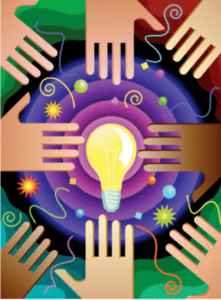
By Julie Joyal Mowschenson and Robert J. Weintraub
Phi Beta Kappa. Downloaded from SagePub.com

